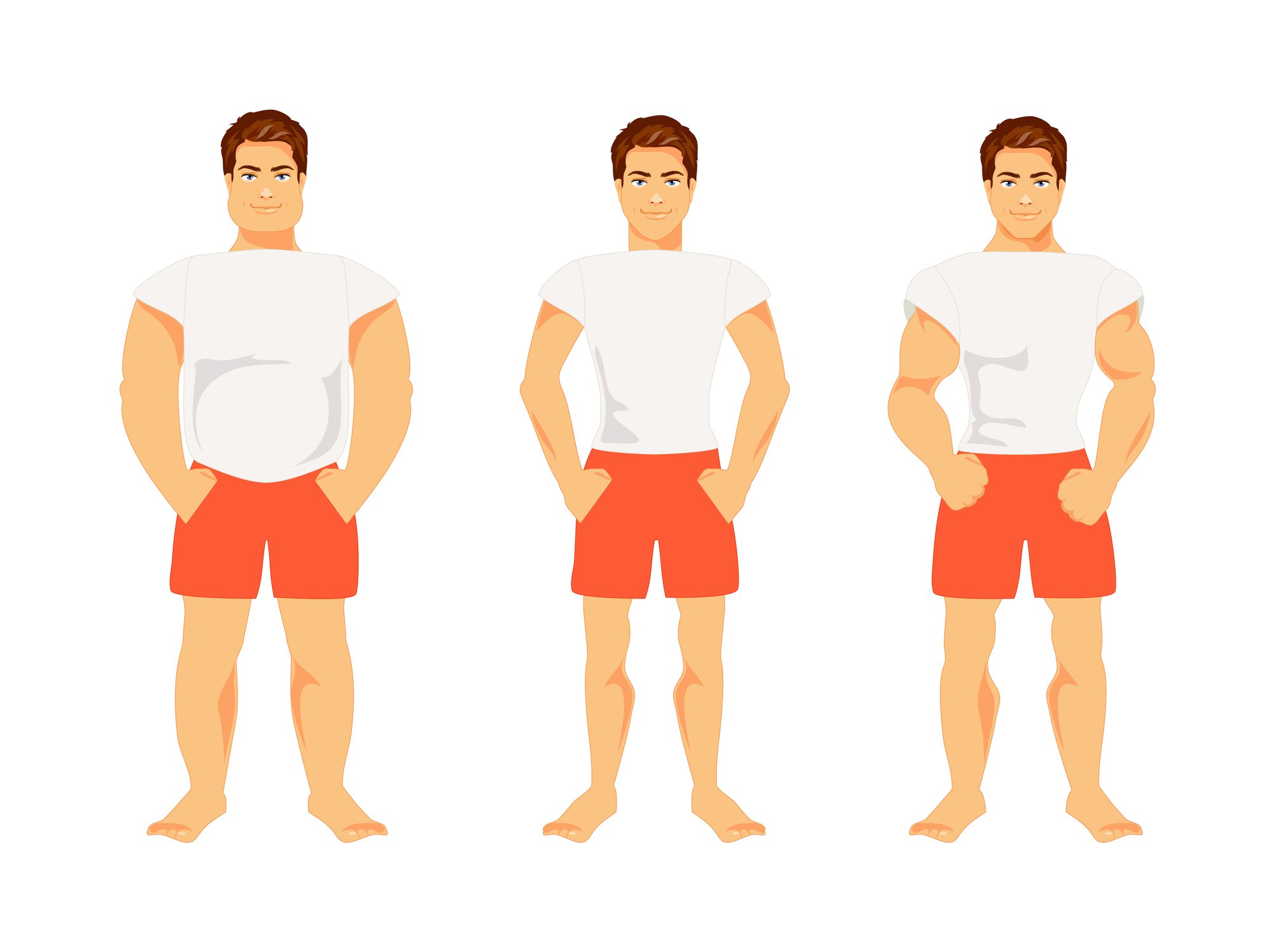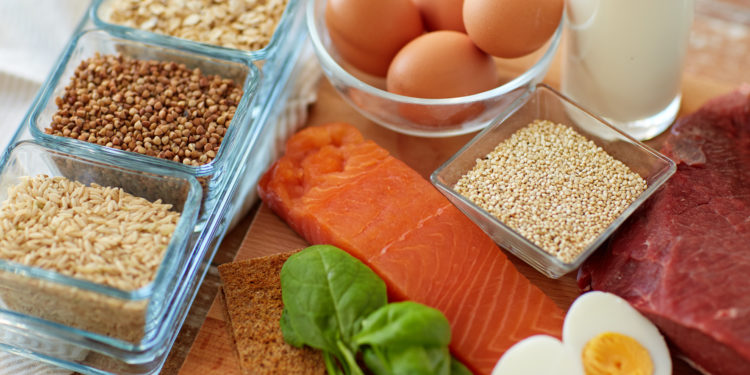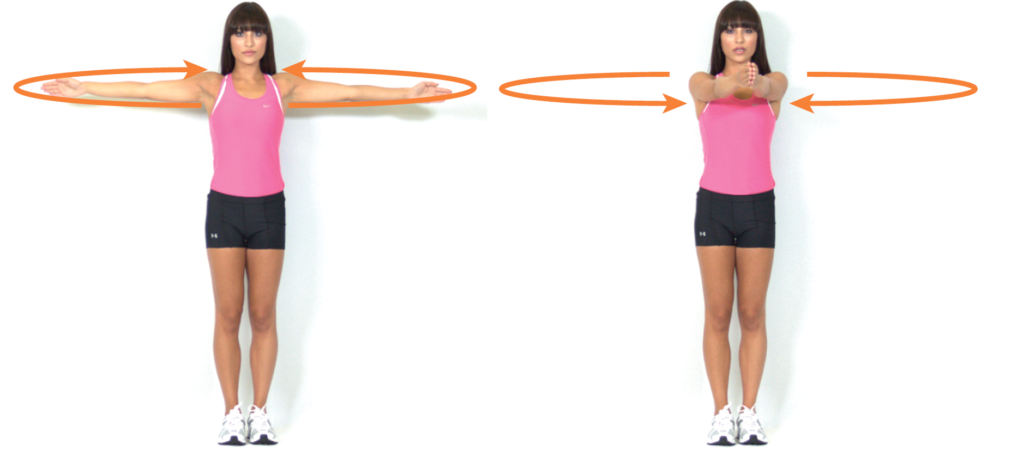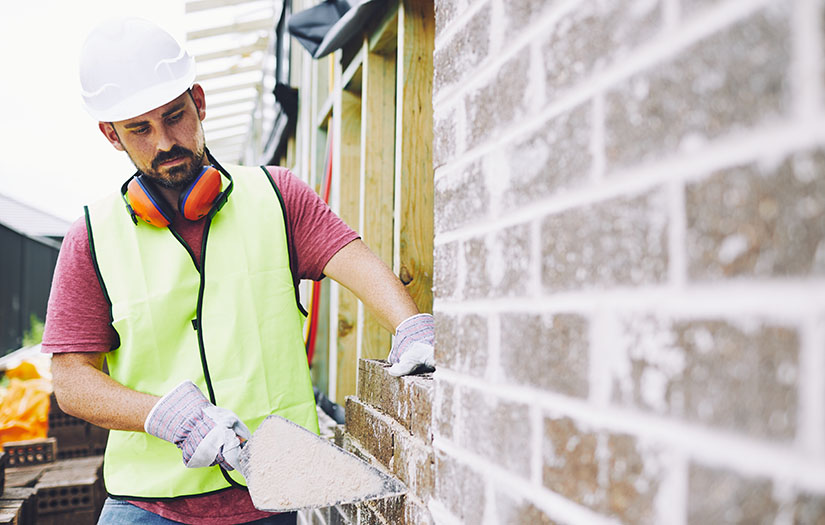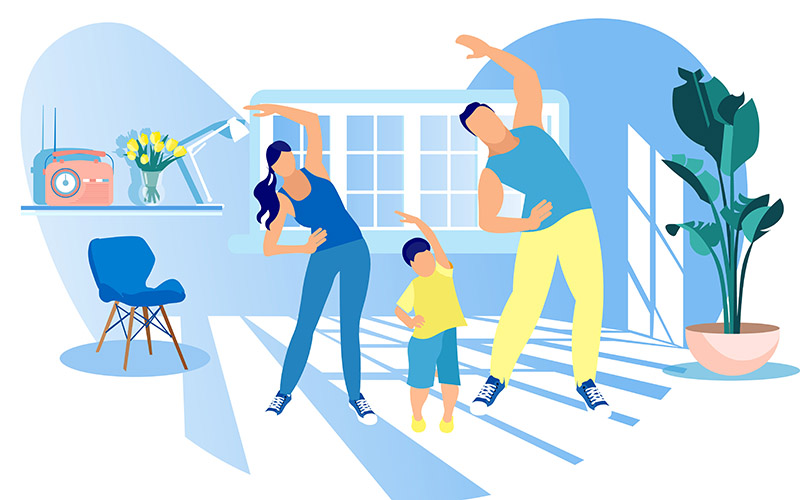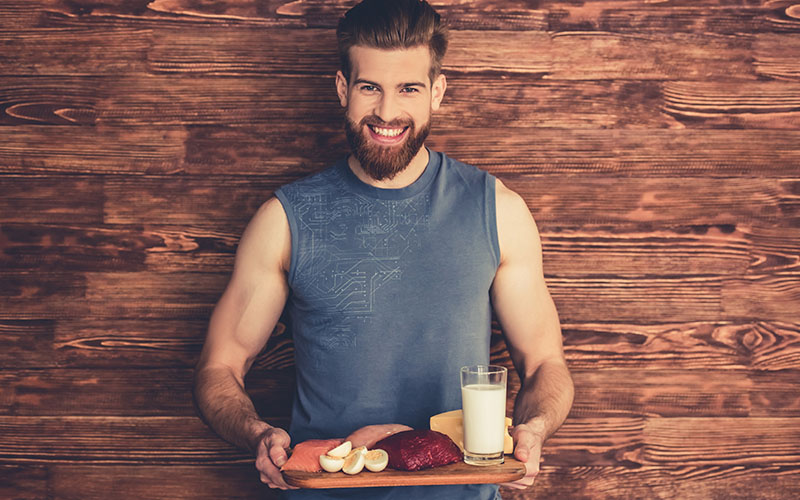It has often been said that nutrition is 90% of the game and training just 10%. The truth is, nutrición y el entrenamiento son igualmente importantes por varias razones, y no es solo un juego 50/50 porque hay muchos otros hábitos o rituales igualmente importantes que son fundamentales para la salud a largo plazo de los clientes.
Sueño, socialización, tipos de entrenamiento, cambio de comportamiento, mobility, mental health, and, yes, nutrition are vital aspects of overall health. Truth be told, what may be most important is how to make any of those mejor para tus prácticas Hábitos permanentes.
Este artículo funcionará como una hoja de trucos en cómo ayudar a los clientes a crear nuevos hábitos de nutrición a través del cambio de comportamiento y cómo hablar sobre nutrición con sus clientes.
El contenido presentado en esta publicación de blog se deriva de nuestro nuevo mini curso: Estrategias para mejorar los hábitos nutricionales. Asegúrese de consultarlo para obtener aún más contenido curado sobre el tema.
Cómo crear nuevos hábitos nutricionales
Adoptar nuevos hábitos y romper los viejos puede ser un desafío. Con demasiada frecuencia, cuando intentamos trabajar con alguien, tratamos de inculcarle nuestros objetivos: come esto, no comas aquello, o haz esto, no hagas aquello.
Pero al igual que a todos los clientes de entrenamiento no se les coloca inmediatamente debajo de una barra para hacer una serie de sentadillas, no todos los que ingresan al gimnasio tendrán los mismos objetivos o estrategias de resultados para lograrlos cuando se trata de nutrición.
When we think about the habits most of us have, many are well-established. Every day you make automatic choices that require little consideration or thought. You simply do them. And the same is true of your clients.
Es genial cuando estos hábitos funcionan para nosotros y nos ayudan a vivir la vida que deseamos, desde las simples elecciones de recordar ducharnos y cepillarnos los dientes, hasta las más complejas de tomar el tiempo para estudiar y estar al día con la educación continua.
But what about the habits that don't align with what we want to achieve? What about the client who really wants to lose weight and is consistently training to make that happen but can't stop late-night snacking on chips? Or the athlete who says they are committed to improving performance but keeps grabbing drinks with friends several nights a week?
Reminding clients (and if we're honest, even ourselves) how these choices impact our ability to reach our goals, isn't sufficient. Many times we already know these things are working against us. Instead, we have to learn how to unwire the habit and rewire a new one to create changes that support our goals, and that can last. Changing a pattern takes conscious and repeated effort.
The interesting thing about our brains is that they like to be efficient. Your brain wants to move any action you repeatedly do into a habit because it requires less effort to process and perform the behavior - meaning we do them over and over again. That's great when habits work for us - not so good when they work against us. You see, when a habit is formed, the brain stops participating fully in the decision making - instead, it turns it over to our subconscious.
¿Qué tiene que ver el cerebro subconsciente con los hábitos de nutrición?
Nuestro subconsciente puede ejecutar el programa hasta en el 95% de las elecciones que hacemos cada día (1). Esta parte inconsciente del cerebro, también conocida como el cerebro rápido automático o el sistema, nos ayuda a preservar el esfuerzo mental para el pensamiento crítico y la resolución de problemas para las decisiones más críticas.
The fast brain is the one that steps in and quickly decides what to do based on experience or emotion or impulsivity. It's the one that when you feel a surge of stress at the end of a long day, declares, "Necesito. ¡Una bebida!"
El lado lógico del cerebro consciente
La parte consciente del cerebro, también conocida como cerebro lento o sistema dos, es mucho más racional y lógica. Esta parte del cerebro considera los pros y los contras de la situación, las posibles consecuencias a largo plazo y conecta esas elecciones con objetivos a largo plazo. El cerebro lento es el que puede planificar cómo podría manejar esa situación estresante en la que desea recurrir a una bebida y qué podría elegir en su lugar.
Entonces, ¿cuál "gana"?
Depende del sistema que esté utilizando en el momento de tomar la decisión. No hay un "ganador" o un "perdedor" per se, pero hay formas de avanzar hacia una conciencia más consciente de las decisiones que tomamos y por qué las hacemos, y cómo hacer que sea menos probable que nuestro rápido cerebro gobierne el gallinero. .
Ultimately, though - you and your clients are in the driver seat, and that is all based on the habits we build and how we build them. The brain is capable of vast change after all, through neuroplasticidad y activo cambio de comportamiento cuando nos lo proponemos.
Proceso de formación de hábitos: el ciclo del hábito
Consideremos cómo es el proceso normal de formación de hábitos. Por lo general, los patrones se forman con el tiempo a medida que comenzamos a realizar una nueva serie de comportamientos una y otra vez.
En El poder del hábito, Charles Duhigg describió una investigación del MIT que descubrió tres elementos que se pueden encontrar consistentemente en cualquier hábito que tengamos: señal, rutina y recompensa (2)
Más recientemente, en Hábitos atómicos, El autor James Clear amplió este concepto para incluir un elemento adicional, CRAVING (3).
It is this description of the habit loop that we'd like to use to define how we form habits. Of course, to expand on this understanding, both books are excellent additions to your toolbox to allow you to serve your clients better. For now, here's the abbreviated version.
Los comportamientos se moldean con el tiempo utilizando la siguiente fórmula.
Los 4 pasos de la formación de hábitos
CUE -------> CRAVING ------> RESPONSE ------> REWARD ------> Repeat this process
As you see here, it's this normal pattern by which habits are ultimately created. Let's talk through this a bit more to bring it to life.
Paso 1: Cue
A señal is anything that brings about a craving. Cues can include a time of day, a person, feeling or mood, a smell, or even a specific environment. For example, you wake up in the morning, and that triggers a cascade of habits that you may not even think about.
Maybe you wake up, go to the bathroom, make a cup of coffee, brush your teeth, get dressed, etc. Your cue? Time of day or for most people, the alarm clock told them it's time to wake up.
Paso 2: Deseo
Siguiendo con nuestro ejemplo de tiempo anterior y despertando, el ansia - o en otras palabras - el motivación behind the habit is what moves someone into action. You aren't motivated necessarily to brush your teeth, but rather the feeling you have from a clean mouth. Or you may not crave coffee, but rather the feeling it provides to you. Cravings differ for each person. For some, they may crave to feel awake; for others, they may crave the feeling of "attacking the day." In general, cravings occur because we want to change our internal state, so what that looks like for your clients may differ.
Paso 3: respuesta
A continuación, tenemos un respuesta. The response is the actual habit you perform (brush your teeth, drink the coffee, etc. if we're sticking with our time example). Think about what your usual response is to your cue in the morning and what craving you fill. And also consider how many responses are possible. Some may choose to wake and go to the bathroom.
Others may get up and head to the kitchen to start the coffee before going to the bathroom. Others may wake and lie in bed for a bit, scrolling through texts and social media. If we're talking about 100 people, there could be 100 different responses to the same cue based on experience, preferences, environment, etc.
Paso 4: recompensa
Finalmente, tenemos un recompensa. On one level, the reward is that the craving is gone. We wanted to change our internal state, and we successfully achieved that. Pretty interesting isn't it?
We like satisfying the discontent our brain creates. On the other hand, the brain is hard-wired to notice rewards from our behavior - so we're also paying close attention to what other rewards the response has created. If the reward also has other benefits – the coffee was delicious, we can now kiss our spouse with our fresh breath, etc.… it's more likely we'll repeat this cycle over and over.
Aplicar la formación de hábitos con la nutrición
Let's say a client comes to you and has laid out some of her health goals. As you talk through a typical day, she tells you that she struggles with the mid-afternoon slump like so many. She typically works through her lunch, spends the next couple hours on conference calls or in meetings, then 3 PM hits, and she completely tanks. Her energy. Her mood. And it's taken out on everyone or anything in "her way."
Interpretemos esto usando la señal, el deseo, la respuesta y la recompensa para aplicar esto a la situación diaria.
Mary puede comenzar con una mala emoción: no le gusta cómo se siente en su cuerpo. Esta es ella señal, que puede haber sido lo que la trajo a ti en primer lugar.
Esa señal luego conduce a un ansia, que, en este caso, es su deseo interno de cambiar porque simplemente quiere sentirse mejor.
El deseo de cambiar en este caso la llevaría a ti, el entrenador, como un respuesta or maybe making some changes within her nutrition plan. But then the challenge here is with what she desires, and that is losing weight, which is outcome-driven. Unfortunately, the outcome of weight loss is detached from the immediate choice of the behavior. For example, meeting friends (again) on a Tuesday night for happy hour isn't connected to the outcome of reaching a specific bodyweight six months down the road.
With her ultimate reward being the scale, encouraging her along the way could be a challenge. If instead, the discussion is around those small, daily wins - educating her through those daily choices will go a long way. How can she recompensa ella misma enfocándose en los resultados del proceso, como hacer ejercicio o comer alimentos más saludables. Al recompensarse a sí misma por las elecciones específicas que puede hacer en el camino que le permitirán alcanzar su objetivo de resultados, puede permanecer conectada durante todo el proceso. Es el poder de esos pequeños hábitos y victorias que realmente la impulsarán hacia el éxito a largo plazo.
El poder de los pequeños hábitos
Many times when clients come to us for help, they are looking to achieve a goal. "I want to be stronger." "I want to be a better athlete." "I want to be thinner." They come in focused on the outcome they want to attain. Again, this goes back to the discussion around an outcome goal but doesn't necessarily consider the necessary steps to achieve that long term win.
The other piece of knowing who your client desires to become and what responses they'd want to choose is that you can help them move in the smallest direction. When we select tiny habits that move toward who we want to become while still staying in alignment with our current self-image, we're much more likely to stick with the change because it doesn't feel so drastic. Switching from fast food to grilled chicken and broccoli may not be possible for someone who identifies themselves as a veggie hater or a fried chicken fanatic.
Someone who dislikes exercise may not be on board with a program that requires them to do five workouts a week. But maybe they can agree to swap their regular stir fry base of rice with stir-fried veggies and aim for just two workouts a week.
Cuando sabe lo que creen que es posible y los ayuda a identificar pequeños cambios que pueden hacer en esa dirección, podemos ayudarlos a avanzar hacia la nueva identidad o meta que desean lograr. Los pequeños cambios no provocan incomodidad, miedo u otros sentimientos de "No puedo hacer esto" y, por lo tanto, conducen a una mayor adherencia y éxito.
But that all comes back to the formation of habits. Remember, cue, craving, response, and reward. When you frame client discussions around these, it can help them achieve what they want to achieve, which ultimately helps you in building long term relationships.
Ejemplos de nutrición de la vida real: cómo construir un plato aplicando el poder de los pequeños hábitos
Ahora hemos abordado la creación de hábitos y el poder de los pequeños hábitos. Veamos ahora algunos ejemplos específicos que utilizan la nutrición y las formas en que los clientes pueden preparar sus platos para satisfacer sus necesidades o sentido de identidad.
First, when we think about a plate, it's important to stress that nutrition is not black and white. Clients want it to be, and it would be so easy for us to simply give people those nutrition rules - eat this, don't eat that. But there's much more to nutrition than what to eat or not eat.
¿Qué pasa si sale con compañeros de trabajo o amigos en un evento social o es una gran fiesta y está rodeado de comidas tradicionales y alcohol, lo que hace que sea un desafío seguir el plan para alcanzar el objetivo principal?
That said, let's simply share what a smart plate could look like. This example allows for some flexibility in its approach - it's not low carb, low fat, vegan, gluten-free, or anything else - it's a way to balance your plate and will meet the needs of most clients and also allow for personalization since no one diet is universal.
How about merely discussing the importance of balancing a plate to your clients? What does that mean? Think about it in terms of handfuls - two handfuls of produce per meal, one handful of protein and one handful of quality, fiber-rich grains. That's it.
Puede dibujar esto para ellos, dibujar líneas en un plato de papel, lo que sea que sea más cómodo para enseñar, pero al final del día, hacer cambios simples como este ayuda a enfatizar el mensaje de los pequeños hábitos.
Usar el ciclo de hábitos para crear hábitos nuevos y positivos
We've covered a lot so far - the habit loop, fast and slow brain, and tiny habits. Now we're going to focus on how we can use the habit loop to consciously create positive habits using an example.
We'll assume a client wants to start a training program with you and hopes to work out first thing in the morning three days a week. Let's walk through the habit loop to see how we can make it more likely she consciously chooses this behavior and repeats it until it's habitual.
Bucle de hábitos: la señal
Para la señal, la clave es hacer que sea algo que ocurra de manera consistente. Ahora, en este ejemplo, está eligiendo hacer ejercicio a primera hora de la mañana (lo que en realidad lo hace fácil), porque es probable que no se interpongan muchas cosas entre su señal de despertarse y su respuesta de ir al gimnasio a entrenar.
An easy strategy to cue yourself to do a new behavior is to create a "When I, Then I" statement and pair the new behavior with something you already do. When I do x, then I do y. Or in this case, it might look like: When I wake up, then I workout. Have your clients think about how they can tie the new behavior to something they already do.
Bucle de hábitos: el deseo
For the craving, you've got to get a bit more creative because you have to think of what will make your client crave something she is currently not doing. One way to do this is to have her combine a Want to Do an activity with a Need to Do one. In this case, her workouts are a Need to Do behavior.
To crave the exercise, she would combine her training sessions with you with another activity she wants to do. Maybe that is spending time with a friend. So in this example, to crave her morning workouts, she signs up for group training with her friend, which makes her look forward to it even more.
Bucle de hábitos: la respuesta
Now, let's talk about the response. This becomes important because your client needs to make sure the response is something she's likely to do. For this, have them think of 0 as equal to no chance she'll do the behavior and 10 as equal to 100% certainty she makes it happen.
You want her to choose a response that she is 90% certain she can make happen. So, in this case, 9 times out of 10, she will make it to the training session. She feels confident she can - especially since it's the first thing before her day begins (cue) and because her friend will meet her there (craving), and so you agree to 3 days a week. If she is only at a 7 though, in terms of confidence, you'd look at what would make the number higher.
Does she need to go to fewer training sessions per week? Do the training sessions need to be shorter? Keep working to make sure it is a choice she feels confident she can achieve.
Consideraciones de recompensa para el cliente
And then we get to the sweet reward. How can your client reward herself for her new behavior? What immediate response can she include in her routine that will make it feel like a win? For years when we ran a fitness Bootcamp first thing in the morning, we had women who would go to the coffee shop afterward to reward themselves for making it to camp.
Haga que su cliente considere lo que puede usar como recompensa por sus esfuerzos para que sea más probable que se ciña a él. Lo mejor es inmediato, pero siempre que lo encuentre gratificante y no compita con el resultado que desea, cualquier cosa puede funcionar.
By consciously thinking through the cue, craving, response, and reward, your client can create support for her new behavior and increase the likelihood that she will form a new habit loop and ultimately a habit. The next time you or your clients have a habit you'd like to work toward, consider how you can use those four elements to make it stick.
Aplicación de estos principios para hábitos nutricionales positivos
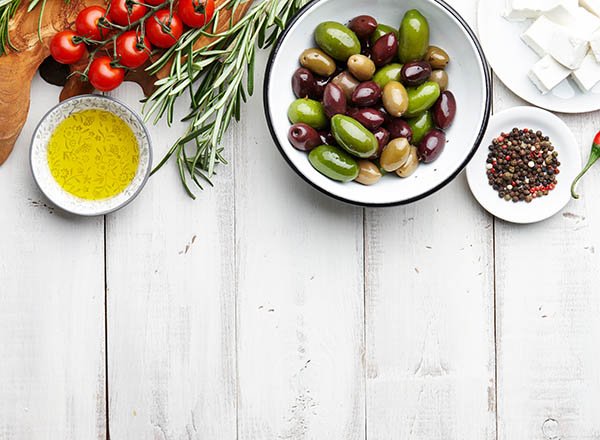
Apliquemos ahora esto a un comportamiento nutricional, ya que a menudo es útil analizar diferentes escenarios para aplicar esto mejor a su propia situación. ¿Qué tal si anima a su cliente a beber más agua, por ejemplo? Simplemente decirle a un cliente que beba más agua no es demasiado efectivo por sí solo, por lo que una estrategia como la que describiré puede ayudar. Usando el marco discutido sobre los hábitos de construcción, veamos cómo podemos darle forma.
Por supuesto, hay muchas horas del día en que puede beber más agua. Pero dado que sería más fácil distribuir la ingesta a lo largo del día, una señal que podría alentar aquí sería tomar un vaso de agua inmediatamente después de despertarse. Entonces, cuando me despierto, bebo un vaso de agua.
Yes, it can be that simple. The craving then can be the feeling of drinking a glass of water before anything else. That feeling of wetting your mouth first thing in the morning. Or the sense of how that feels in your body when you first drink it. The response then is deciding how much to drink.
Hábitos positivos en acción
If the goal is to drink half their body weight in ounces each day, for example, well, then starting with an 8 oz glass might be sufficient. Finally, the reward might be as simple as checking off on the calendar that the client drank water or mark it off in a nutrition log or tracker. So these can be pretty simple. It depends on what the client would benefit from, and this can be decided together.
While this may seem rather straightforward, when stacked together with other positive habits, you can see how "magic" can start to happen. What if your client stacks together that simple habit of drinking 8 oz of water each morning with a 5 or 10 minute morning walk. When they get back from their walk, then they enjoy a piece of fruit and take their vitamins.
Lo siguiente que sabemos es que existen cada vez más hábitos positivos que se instalan de forma permanente y llevan a los resultados deseados. Ahora tenga en cuenta que todos esos hábitos no se llevarían a cabo o no deberían sugerirse de la noche a la mañana; La belleza de los pequeños hábitos es que ocurren con el tiempo y se apilan uno encima del otro una vez que se han establecido los comportamientos previos.
Sin embargo, como sabemos, no se trata solo de construir hábitos positivos además de hábitos positivos. También tenemos que considerar romper (o reemplazar) los viejos hábitos de todos modos.
Usar el bucle de hábitos para romper viejos hábitos
We make 1000's of decisions day in and day out. And for most people who are making the same type of decisions in the same kind of environment, these decisions are ultimately being handled from our fast brain. They're automatic, based on years of learned patterns and may ultimately conflict with our goals. So what do we do if we have habits that we believe are problematic that have a negative impact and are keeping us, or our clients, stuck?
Let's take a look at how we can use the four elements of the habit loop to unlearn a negative habit. Beginning with the cue, in an ideal environment, you'd just remove it. But cues are complex - and include the time of day, people, mood, environment, and other behaviors.
You can't always eliminate them, but you may be able to avoid them or alter them, so they are within your control. Say, for example, your client complains that he always overeats in the evening. One of the reasons for overeating is snacking as soon as he walks in the door after work. If the cue is when I get home, then I grab a snack from the fridge, choosing to come in through a different entrance to avoid landing in the kitchen may be beneficial. Or he could decide to head to the bedroom and change clothes instead while he thinks about what he wants to make for dinner.
¿Qué es Urge Surfing?
El surf de urgencia es una técnica que compara un antojo con una ola. A la altura de la ola (la cresta) llega la parte más difícil de resistir del ansia. Pero este punto culminante del anhelo es solo temporal, ya que la ola finalmente cede (todo lo que surge debe finalmente bajar). Con suficiente tiempo y paciencia, puede navegar en el antojo manejable y esperar a que suba el siguiente.
When it comes to craving - this is the part that usually makes people give in to the old habits over and over again. They feel a craving to raid the pantry or fridge, and that craving grows and grows. It's as if once your client recognizes he wants to eat something, his brain will increase the urgency and the intensity of that craving. To change the craving (and this is something that works with repeated use and practice over time), you can teach your client to use Urge surfear.
On average, it takes about 15-20 minutes before cravings will go away. Depending on the habit, this could differ, but the key is to remember that left on its own, the craving will eventually go away.
La primera vez que su cliente intente resistir el impulso y surfear la ola, se sentirá bastante intenso, porque el cerebro está acostumbrado a ceder al impulso, pero eventualmente con la práctica repetida y diciendo que no, se vuelve más fácil.
estrategias para impulsar con éxito el surf
Strategies for riding out the urge include waiting that 15-20 minutes before deciding if you still want to give in. But you can also take advantage of distraction (finding something else to do, going for a walk, etc.) and can also substitute a healthy option in its place. Instead of raiding the fridge and pantry for the high calorie and salty snacks, your client could opt for a piece of fruit instead.
Then to target the response, your client could increase the distance between himself and the high-calorie snacks. Maybe he only keeps healthy options in the house, so even when he does raid the pantry, it doesn't do much damage. Or perhaps he moves the tempting snacks to a far-removed cabinet instead. And lastly, to target the reward aspect, your client could find someone to help hold him accountable. Maybe that's you, and he texts you to let you know when he navigates that habit loop successfully, or perhaps it's his spouse/partner or kids.
Compartir las metas de "darse por vencido" hace que sea mucho más probable que esos viejos hábitos sean abandonados o reemplazados.
Resumen
It's not just about the snacks, the breakfast, lunch, or dinner. It's not even just about the workout or daily movement breakfast. Sure, all of these add up, and one of our jobs as trainers is to help clients sort through their daily health behaviors.
La clave de cualquier éxito a largo plazo, ya sea que se trate de nutrición, ejercicio o, bueno, cualquier cosa, se está construyendo lentamente con el tiempo. Progreso sobre la perfección.
Consider this with your clients and even apply it to your behaviors. Changing habits may feel challenging, but with the right awareness and support, we can craft the behaviors to help our clients and us, achieve goals and become who we'd like to be.
When we think about the habits most of us have, many are well-established. Every day you make choices that you don't have to consider or think about. You simply do them. And the same is true of your clients.
Este sistema bien diseñado es positivo, porque si tuviéramos que pensar en cada cosa diaria, cada minuto, bueno, diablos, estaríamos agotados física y mentalmente. Cuantos más hábitos positivos podamos automatizar y ayudar a nuestros clientes a hacer lo mismo, mejor para todos nosotros.
Referencias
- Wyer JR., RS (1997). La automaticidad de la vida cotidiana. Hillsdale, Nueva Jersey: Lawrence Erlbaum Associates.
-
El poder del hábito por Charles Duhigg
- Hábitos atómicos por James Clear




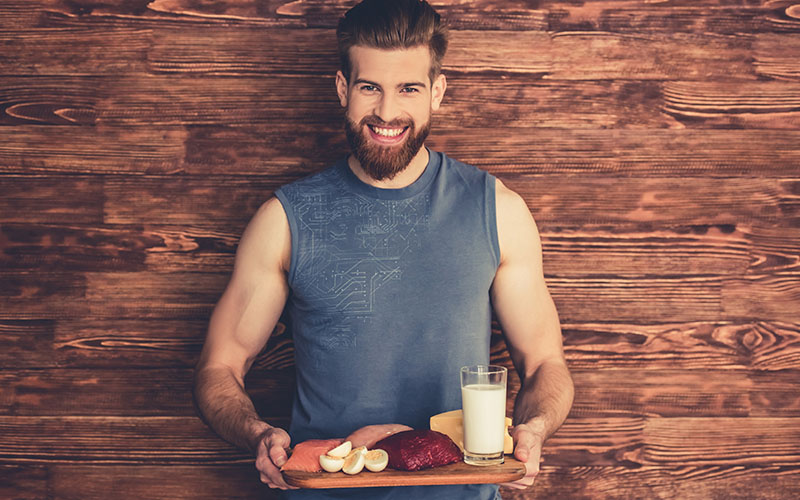
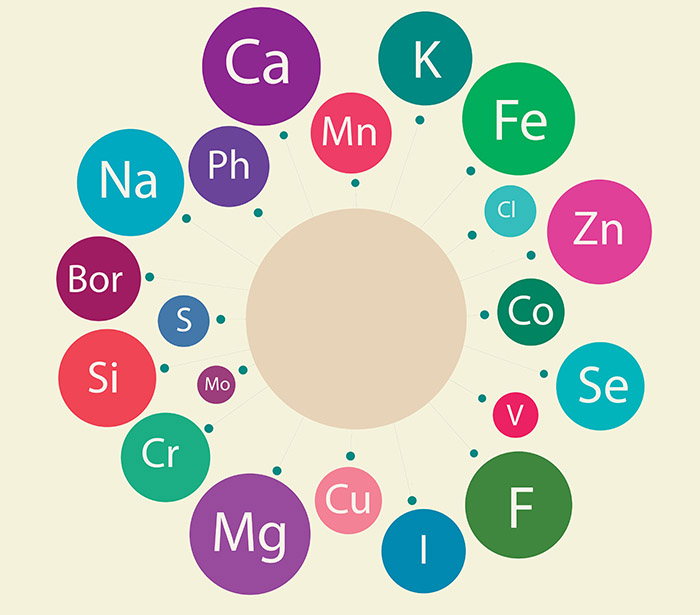
.jpg?width=330&name=Optima%20Ads_blog3%20(1).jpg)
